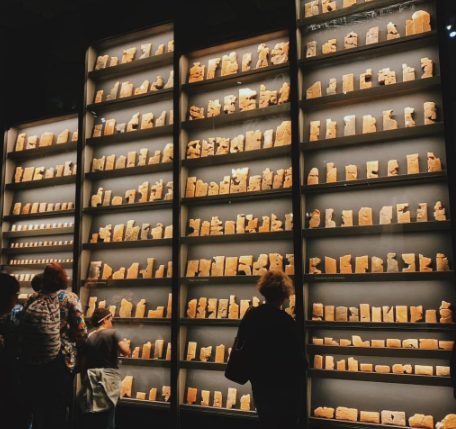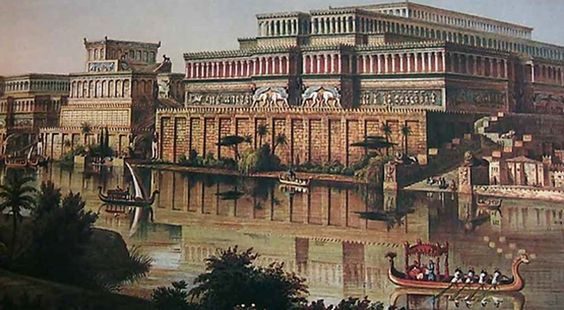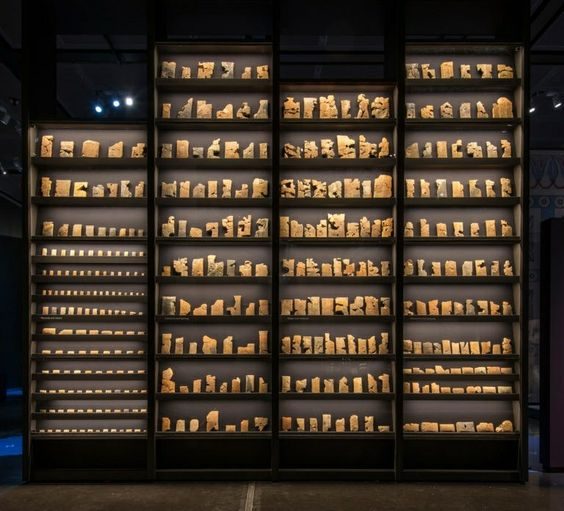
The Ashurbanipal Library, also known as the Royal Library of Ashurbanipal, stands as an unparalleled testament to the ancient pursuit of knowledge. Nestled within the ruins of King Ashurbanipal’s palace in Nineveh, near modern-day Mosul, Iraq, this historic repository holds the distinction of being the world’s oldest surviving library. Unearthed from the archaeological remains of a bygone era, the Ashurbanipal Library provides a unique window into the intellectual richness of the Assyrian Empire. In this article, we will delve into the fascinating history, significance, and contents of the Ashurbanipal Library.
History of the Ashurbanipal Library
The origins of the Ashurbanipal Library can be traced back to the 7th century BCE, during the reign of King Ashurbanipal, the last great king of the Neo-Assyrian Empire. Known for his military prowess and administrative acumen, Ashurbanipal was also a patron of the arts and learning. He established the library as a collection of clay tablets, housed within his grand palace in Nineveh.
The library thrived under Ashurbanipal’s reign, amassing a vast collection of texts that covered a wide range of subjects, including literature, science, religion, and history. Scholars and scribes were employed to transcribe and preserve the knowledge of the time, creating a legacy that would endure for millennia.
Discovery and Excavation
The Ashurbanipal Library remained hidden for centuries, buried beneath the debris of Nineveh after the fall of the Assyrian Empire. Its rediscovery occurred in the 19th century when archaeologists, drawn by the allure of ancient Mesopotamia, began excavations in the region.

The renowned British archaeologist Austen Henry Layard played a pivotal role in uncovering the library’s remains. In 1853, Layard unearthed a trove of cuneiform tablets, revealing the existence of a vast archive of knowledge. Further excavations by subsequent archaeologists, including Hormuzd Rassam and Sir Max Mallowan, continued to unveil the extent of this literary treasure trove.
Significance of the Ashurbanipal Library
The significance of the Ashurbanipal Library lies not only in its age but also in the wealth of information it provides about the ancient world. The texts found in the library encompass a diverse array of subjects, offering insights into the culture, language, and beliefs of the Assyrians.
The library’s collection includes epic poems such as the “Epic of Gilgamesh,” considered one of the earliest known works of literature. Scientific and medical texts, religious incantations, and administrative records also contribute to the multifaceted nature of the library. Its contents serve as a time capsule, allowing modern scholars to piece together the puzzle of ancient Mesopotamian civilization.
Contents of the Ashurbanipal Library
The clay tablets within the Ashurbanipal Library are an eclectic mix of writings in the cuneiform script, the writing system of ancient Mesopotamia. The texts cover various genres, providing a comprehensive view of the knowledge and interests of the Assyrians during the 7th century BCE.

- Literature: Epic poems, myths, and legends form a significant portion of the library’s collection. The “Epic of Gilgamesh,” a narrative of heroism, friendship, and mortality, is among the most celebrated literary works discovered in the library.
- Science and Medicine: The library houses texts on a range of scientific subjects, including astronomy, mathematics, and medicine. These texts reveal the advanced knowledge and practices of the Assyrians in these fields.
- Religious Texts: Rituals, prayers, and incantations dedicated to various deities are found in abundance. The religious texts shed light on the spiritual beliefs and practices of the Assyrians.
- Historical Records: Administrative documents, historical chronicles, and royal inscriptions provide a glimpse into the political and social structures of the Neo-Assyrian Empire.
Conclusion

The Ashurbanipal Library stands as a testament to the enduring human quest for knowledge. Its discovery and subsequent exploration have enriched our understanding of ancient Mesopotamia and the Assyrian Empire. As we continue to unravel the secrets hidden within its clay tablets, the Ashurbanipal Library remains a symbol of the timeless pursuit of wisdom that transcends the boundaries of time and culture.





